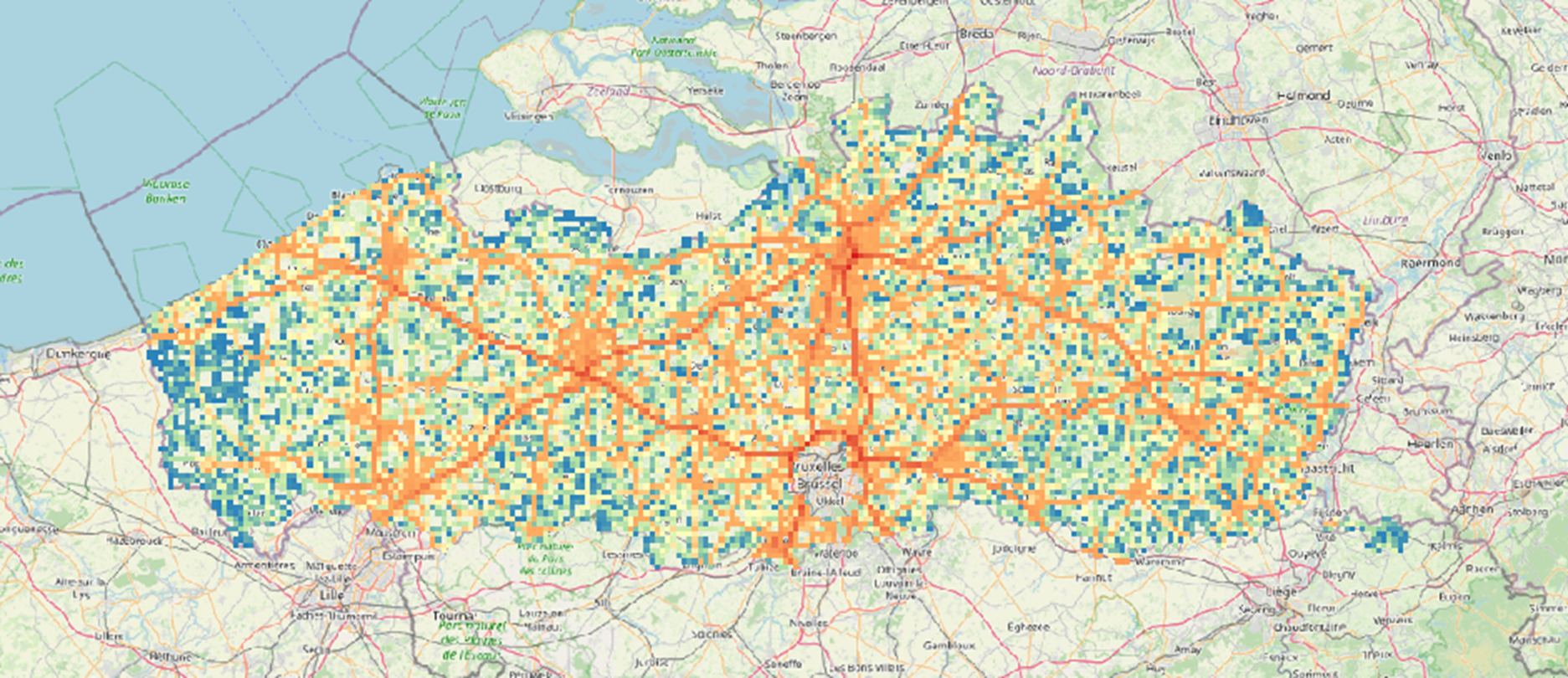FASTRACE Traffic Emission Model
FASTRACE relies on COPERT emission factors and uses information about the fleet composition and the traffic volumes. The output of FASTRACE is designed for use as input to urban scale air pollution models. The built-in flexibility offers possibilities to use FASTRACE in data rich as well as data poor areas, calculating detailed geographically distributed emissions for road transport or aggregated fleet emissions at country or regional scale.

Technical details
FASTRACE starts from a detailed break-down of the vehicle fleet on the one hand (number of vehicles per vehicle type, annual mileage per vehicle type) and from country or region-specific emission factors. If available, the software also uses geographically explicit vehicle counts per road segment (number of passing vehicles per road segment and the associated speed). This data is often provided by a software tool that can simulate the flow of traffic (e.g. VISUM).
Using this input data, FASTRACE calculates emissions in general as an emission factor times the total number of km driven. If fleet emissions are needed, the formula changes to:
Emission = EF x [number of cars of certain type] x [number of km driven by that car type]
When geographically explicit vehicle counts per road segment are available, network emissions can be calculated. Similar to the above formula, the emission is then calculated as:
Emissions = [Weighted-averaged EF] x [number of cars of certain aggregated type] x [road segment length]
The software allows for:
- A user defined aggregation to the preferred car types and weighing based on the regional fleet
- Sectoral disaggregation, for example (G)NFR sectors
- Calibration of the fleet and network emissions
FASTRACE: the nr.1 choice for road transport emissions
FASTRACE offers plenty of opportunities to look at historical trends, future prognoses, and to simulate new road traffic scenarios. Being COPERT-based, compatibility with models in other EU member states is ensured. Among the main FASTRACE advantages above existing road transport models, FASTRACE includes:
- The possibility to define EF for alternative fuel technologies
- The possibility to define EF for additional pollutants
- Flexible fleet prognoses with a dedicated fleet prognosis tool
- Network emission calculations on individual road link level
- The possibility to include low emission zones in the network calculations


